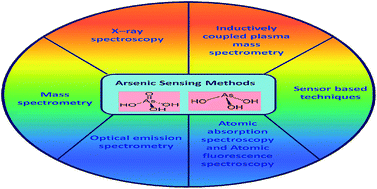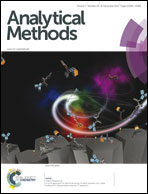Analytical methods for sensing of health-hazardous arsenic from biotic and abiotic natural resources
Abstract
The existence of arsenic in biotic and abiotic samples poses severe health threats globally. Thus, considering its toxicity, the sensing of arsenic is of extreme importance. The present review covers a significant evaluation of the core spectroscopic methods of analysis hitherto employed for the determination of arsenic in biotic and abiotic samples and their shortcomings. As a result of the distinct intricacy of biotic and abiotic samples, most of the methods cited have serious limitations with respect to selectivity, sensitivity and data provided at the molecular level. In the last part of the review, we focus on collective research efforts towards sensing of arsenic by nanosensors developed during the past one and a half decades and document key points in this advancement. These sensors offer new prospects for arsenic sensing technologies in terms of sensitivity and selectivity, rapidness, and cost efficiency. Considering the advantages of sensors, future arsenic speciation studies may be done using improved sensor based analytical methods. Further advances in new sensing methods are vital to achieve high limits of detection, accuracy, better selectivity and field portability.



 Please wait while we load your content...
Please wait while we load your content...